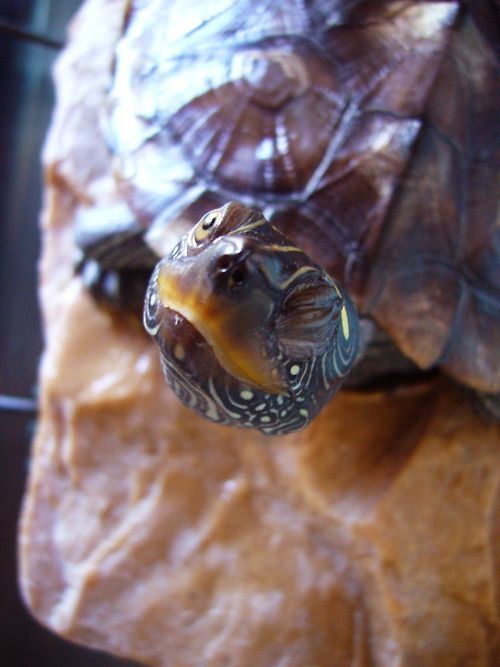|
|
Turtle's Face Emotion
|
Skin and molting - as mentioned above, the outer layer of the shell is part of the skin; each scute (or plate) on the shell corresponds to a single modified scale. The remainder of the skin is composed of skin with much smaller scales, similar to the skin of other reptiles. Turtles do not molt their skins all at once, as snakes do, but continuously, in small pieces. When kept in aquaria, small sheets of dead skin can be seen in the water (often appearing to be a thin piece of plastic) having been sloughed off when the animal deliberately rubs itself against a piece of wood or stone. Tortoises also shed skin, but a lot of dead skin is allowed to accumulate into thick knobs and plates that provide protection to parts of the body outside the shell.
By counting the rings formed by the stack of smaller, older scutes on top of the larger, newer ones, it is possible to estimate the age of a turtle, if one knows how many scutes are produced in a year. This method is not very accurate, partly because growth rate is not constant, but also because some of the scutes eventually fall away from the shell.
|
|









